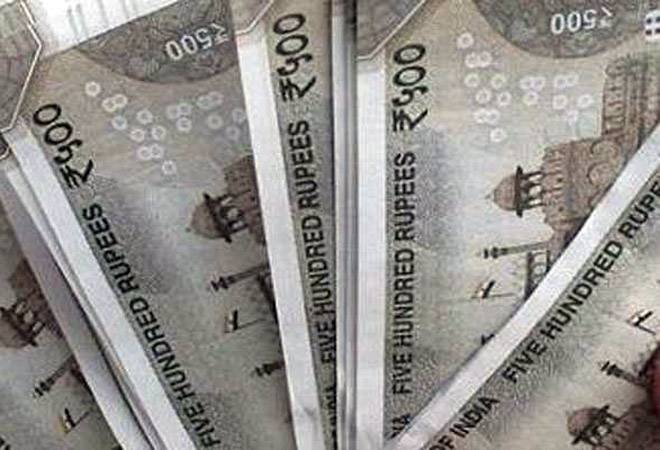
Because money is used in virtually all economic transactions, it has a powerful effect on economic activity. An increase in the supply of money works both through lowering interest rates, which spurs investment, and through putting more money in the hands of consumers, making them feel wealthier, and thus stimulating spending. Business firms respond to increased sales by ordering more raw materials and increasing production. The spread of business activity increases the demand for labor and raises the demand for capital goods. In a buoyant economy, stock market prices rise and firms issue equity and debt. If the money supply continues to expand, prices begin to rise, especially if output growth reaches capacity limits.
What is M1 vs M2 M3 money supply?
M1, M2 and M3 are measurements of the United States money supply, known as the money aggregates. M1 includes money in circulation plus checkable deposits in banks. M2 includes M1 plus savings deposits (less than $100,000) and money market mutual funds. M3 includes M2 plus large time deposits in banks.
B In discrete time, the foregone interest is discounted to present value from the
end of the period to the start of the period, by division by 1 + R. The real user cost is multiplied by the cost-of-living index to convert
to the nominal user cost. If p is the cost-of-living index and ri is the interest rate on monetary asset i, then the asset’s nominal user cost in discrete time is p(R – ri)/(1 + R). The Bank of Israel’s measure of the
rate of return on pure investment is the short-term, bank, loan rate. The second-best
monetary aggregate was the former next-broadest aggregate, M3, properly constructed as
an index number.
Join One of Our IBKR Campus Newsletters
Therefore, it is vital to understand the difference between broad and narrow money when calculating the total money supply. If the Federal Reserve determines the magnitude of the money supply, what makes the nominal value of money in existence equal to the amount people want to hold? A change in interest rates is one way to make that correspondence happen. A fall in interest rates increases the amount of money people wish to hold, while a rise in interest rates decreases that amount. A change in prices is another way to make the money supply equal the amount demanded. When people hold more nominal dollars than they want, they spend them faster, causing prices to rise.
The Federal Reserve, the central bank of the United States, provides the nation with a safe, flexible, and stable monetary and financial system. M3 can be thought of as a congregation of all the other classifications of money (M0, M1, and M2) plus all of the less liquid components of the money supply. Because of its shortcomings, M3 has since been eclipsed by money zero maturity (MZM) as a preferred measure of the money supply. MZM is seen as a better measure of the readily available money in the economy and as a clearer illustration of the expansion and contraction of that supply. MZM does not include money that is not readily available, such as CDs. Learn the money supply definition and why economists study money supply.
Money Supply
In the United States, the Federal Reserve BankThe U.S. central bank that controls money supply in the country. (or “Federal Reserve,” and more informally, “the Fed”) reports several distinct measures of the aggregate money supply. Higher numbers following an “M” reflect broader measures of money that include less liquid assets.

In contrast, when computed as simple-sum accounting numbers, disconnected from economic aggregation theory, M3 and L were among the worst monetary aggregates and were inconsistent with elementary principles of economic measurement. Narrow aggregates, such as M1 and M2, give no weight to many highly-liquid substitutes for money. The Euro is one of the most stable and liquid form of exchanges around the world, the ECB is the second largest central bank globally and the actions of the ECB are widely followed by other central banks around the world. Due to the ECB’s global influence, if the Euro money supply rises, there’s pressure on global interest rates to drift lower and on global prices to rise.
What is the M1 money supply?
The money supply is the total amount of money used by the general public at a given point in time. It should be emphasized that total money supply and total money stock are two different things. Only that part of the overall stock of money with the public at any given time is considered the money supply. Currency, printed notes, money in bank accounts, and other liquid assets make up circulating money.
Changes in M3 can also impact interest rates, as central banks may adjust rates in response to shifts in money supply to influence borrowing, spending, and saving activities. Central banks typically use monetary policy tools such as interest rate changes and open market operations to influence the money supply and control inflation. They aim to maintain price stability by keeping inflation within a target range that is considered healthy for the economy. However, the effectiveness of these tools and the ability of central banks to control inflation depend on various economic and political factors, and their success is not always guaranteed. M3 was traditionally used by economists to estimate the entire money supply within an economy and by central banks to direct monetary policy in order to control inflation, consumption, growth, and liquidity, over medium and long-term periods. That is, M1 includes all forms of assets that are easily exchangeable as payment for goods and services.
Narrow Money and Broad Money
It is important to understand that the M3 money supply is a broad measure of the money supply that includes all of the components of M2 and additional, less liquid assets such as institutional money market funds and large-time deposits. While an increase in the money supply can lead to inflation, the relationship between M3 and inflation is complex and not always straightforward, as other factors such as productivity growth and shifts in supply and demand can also affect inflation. M3 is a measure of a country’s money supply that includes M0 and M1, in addition to less liquid components such as savings deposits, money market funds, and large-denomination time deposits. Essentially, M3 represents a broader perspective of a nation’s total amount of money in circulation, providing insight into the whole economic landscape.
- M0 is referred to as the “wide monetary base” or “narrow money” and M4 is referred to as “broad money” or simply “the money supply”.
- M3 includes all of M2 (and all of M1 and M0) but adds the least liquid components of the money supply that are not in circulation, such as repurchase agreements that do not mature for days or weeks.
- It is important to note that the M1 money supply is included within the calculation of the M2 and M3 money supply, but not vice versa.
- The idea is that tax receipts won’t decrease the amount of reserves in the banking system.
- We do not provide the Federal Reserve’s official simple-sum
monetary aggregates.
Including some types of savings deposits, the money supply totaled $6,275 billion. Let’s explore the broadest measure of money in an economy, which includes physical currency, checking accounts, savings accounts, and other liquid assets – the m3 money supply. M1 is the narrowest measure of the money supply and includes the most liquid assets, such as physical currency in circulation, checking account deposits, and traveller’s checks.
IBKR does not make any representations or warranties concerning the past or future performance of any financial instrument. By posting material on IBKR Campus, IBKR is not representing that any particular financial instrument or trading strategy is appropriate for you. Please review the copyright information in the series notes before sharing. However, the Federal Reserve Bank of St. Louis and some other sources still publish M3 figures for economic data purposes. As of December 10, 2020, M3 for the United States was $18.81 trillion.
What does M2 money supply indicate?
What Is M2? M2 is the U.S. Federal Reserve's estimate of the total money supply including all of the cash people have on hand plus all of the money deposited in checking accounts, savings accounts, and other short-term saving vehicles such as certificates of deposit (CDs).